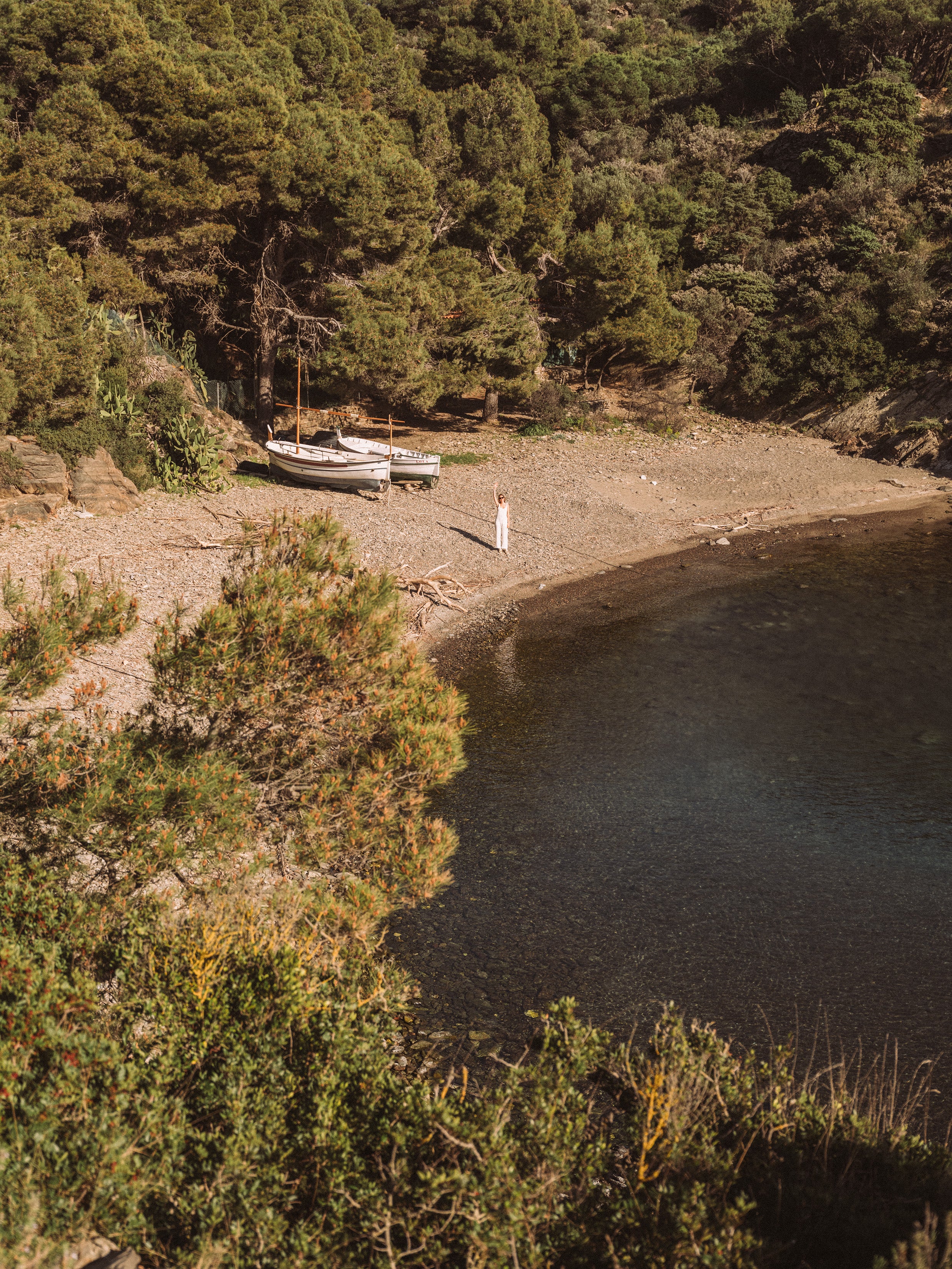A land of fishermen, artisans and artists in which to experience the harmony of nature and the joy of living; Mediterranean lifestyle at its purest essence. In spring, it is a spectacle. We invite you to discover the Empordà.
Cap de Creus and Portlligat
It is said that the Pyrenees are born and die here. A geological prodigy, this lunar-like landscape hides small coves of crystalline waters between the folds of its rocks. In one of them, near the white-walled village of Cadaqués, you can visit the house of Salvador Dalí, a former fisherman's house in the small port of Portlligat that the artist remodelled over time to turn it into a temple of surrealism. Referring to his usual residence, he said: "Portlligat is the place of production, the ideal place for my work. Everything fits to make it so: Time goes more slowly and each hour has its proper dimension. There is a geological peacefulness: It is a unique planetary case."
Casa Tres - Viu Empordà
Casa Tres-Mas Montgrí is an old traditional farmhouse renovated with beautiful Mediterranean simplicity. Located between fruit orchards, vineyards, and rice fields, with beautiful views of the Montgrí massif (popularly known as the bishop), it is only a few kilometres from the long sand beaches of Sant Martí d'Empúries. Its idyllic setting makes this masia the perfect place to relax and enjoy a glass of local wine after a long day exploring the Empordà.
A menu with a view
We have just finished lunch, the sun is shining, the Mediterranean sea is in front of us in all its splendour, and on the horizon, we can see the snow-capped peaks of the Pyrenees. We are at the outdoor terrace of the restaurant Ultramar–in L’Escala, an old fishing village known since ancient times for its salt-curing industry. In some factories they still cure anchovies in the traditional way. It’s time-consuming labour, but it’s just a delicacy full of flavour. Served over some pa amb tomàquet(a slice of bread rubbed with tomato and topped with olive oil) is one of the best and simplest dishes you could taste in the Empordà.
Palau de Casavells
Time for contemplation and discovery. Located in Casavells (Corçà), one of the charming small medieval towns in the area, this fully restored traditional masia from the 14th century houses the summer projects of two of our favourite galleries in Barcelona: Alzueta Gallery, dedicated to contemporary art, and Side Gallery, focused on design. The idea is to create a dialogue between art, design and architecture that transcends centuries. You will find antiques and furniture from the 18th century coexisting with 20th-century icons and the most innovative expressions.
They have just opened the new season with artists such as Enrich R., Marria Pratts, Jordi Alcaraz, Maria Yelletisch, Max Cobalto and Sito Mújica; and designers such as Charlotte Kingsnorth, Nebil Zeman, Sanghoon Kim, Elissa Lacoste and Jennifer Zurick, among others.
Camí de Ronda and Cala S’Alguer
The Camí de Ronda is a series of old smugglers' paths that run along the coastline, from Portbou, very close to the French border, to almost the province of Barcelona, passing through each of the charming fishing villages of the Costa Brava. Pack a backpack, swimsuit and snorkelling goggles, and experience the Mediterranean in all its splendour among pine trees, cliffs and coves. One of the most beautiful and picturesque is located between Calella and Palamós: Cala S'Alguer—with its colourful fishermen's huts, it’s one of our favourites.
Colourful ceramics in La Bisbal
The pottery industry in L’Empordà dates back to the Middle Age, with its capital located in the small town of La Bisbal. You will find many ceramics shops and open workshops throughout its main street, with sidewalks piled high with brightly coloured terracotta tiles, plates, pitches and flowerpots –be sure to get something for your collection. Complete the route with a walk along the river and a visit to the Terracotta Museum. Located within an old ceramic factory, the museum houses an impressive collection of around 11,000 pieces, both traditional and contemporary.
Cap de Creus lunar landscape. / The giant egg sculptures in Dalí's house are a symbol of rebirth.
Effortlessly charming, Cadaqués is made up of a cluster of whitewashed buildings overlooking the Mediterranean.
Salvador Dalí’s house bedroom in Portlligat. / Pine trees meet the Mediterranean sea in Cala Guillola.
An old tree in the central patio of Casa Tres. / Long tables for long sobremesas.
Beautifully restored by Viu Empordà, Casa Tres is traditional masia where you can get carried away, in the purest Mediterranean style.
The rustic kitchen cabinet is filled with local ceramics. / After the long sobremesa, it’s time for a siesta.
Anything tastes better when served with pa amb tomàquet.
Palau de Casavells gallery offers a dialogue between art, design and architecture. The project wants to bring contemporary art into the calm retreat of the Empordà.
Perfectly displayed, colourful fishermen’s houses line the tiny pebble beach in Cala S’Alguer. Now renovated, the fishermen’s huts were traditionally used to store fishing gear.
To get to Cala S’Alguer you have to follow the Camí de Ronda between Calella and Cadaqués. The Costa Brava boasts many small pebble coves only accessible by foot following the Camí de Ronda.
An installation made from colourful glazed ceramic tiles welcomes visitors to the Terracotta Museum of La Bisbal. The collection consists of more than 11,000 pieces, including a selection of pitchers traditionally used for olive oil and wine.






















